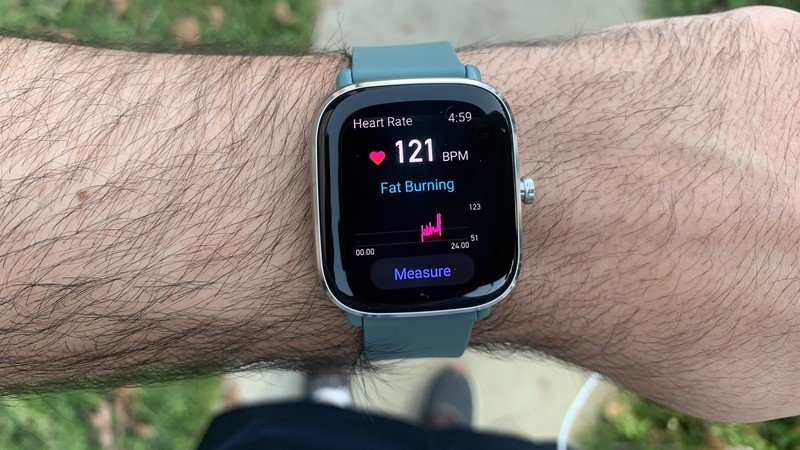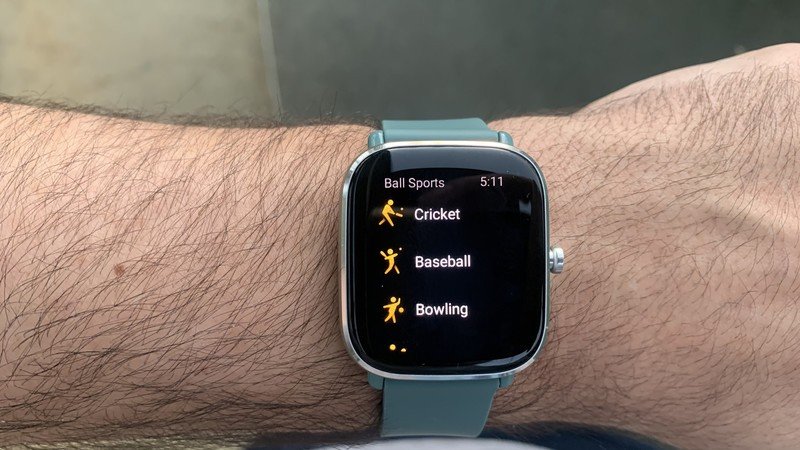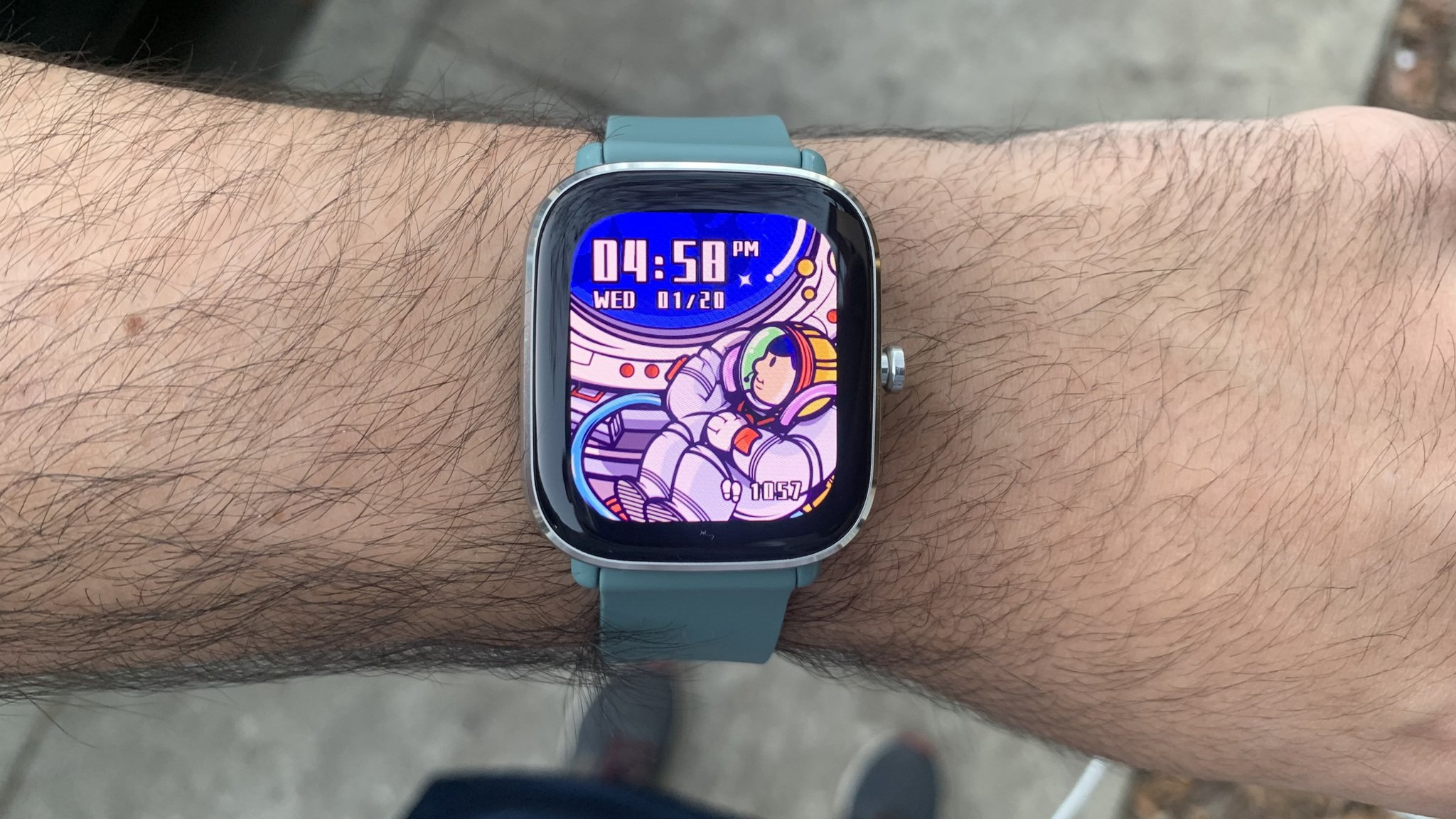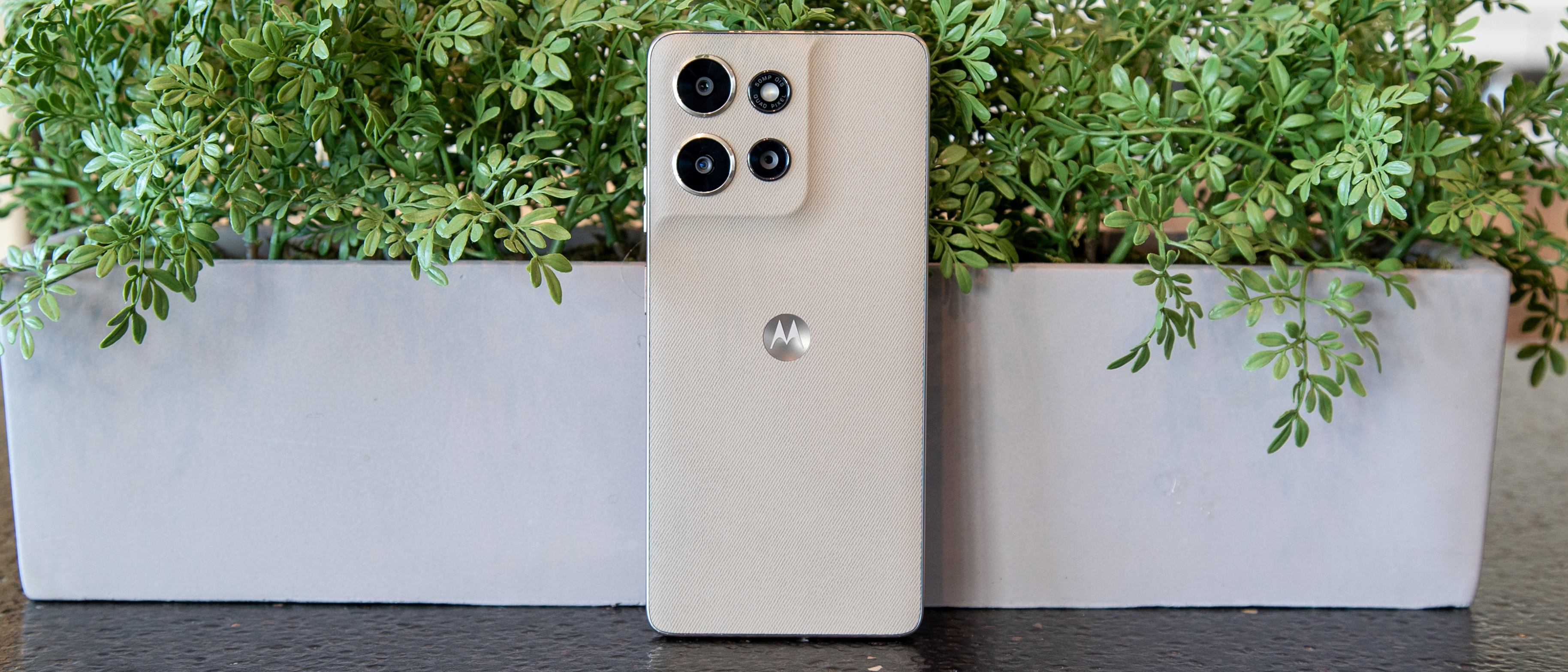Android Central Verdict
Bottom line: The GTS 2 Mini bridges the gap between cheap fitness trackers and fancier smartwatches. It has the long battery life, lightweight build, and price of a tracker, mixed with the bright display and built-in GPS of a more premium watch. It's far from perfect, but we can't think of another $100-ish fitness device that fits the same niche.
Pros
- +
Built-in GPS, heart rate, and blood oxygen sensors
- +
1-2 weeks of battery life
- +
Bright, colorful display
- +
Very affordable price for quality
Cons
- -
No third-party apps or NFC payments
- -
Can have trouble acquiring GPS signal
- -
Watch settings can be tricky to find
Why you can trust Android Central
While writing my GTS 2 Mini review, I had no choice but to compare it to the Amazfit GTS 2 and GTR 2, which launched just a couple of months ago. Huami's branding strategy was to release a bunch of very similar watches with near-identical names within a very short span; so anyone looking to buy an Amazfit GTS 2 Mini will probably want to know if it's worth upgrading to the Amazfit GTS 2e or GTS 2.
The fact is, the GTS 2 Mini has all the health and fitness tracking tools that you'll need, with a bright display that looks good on your wrist and a durable battery you'll only need to charge every week or two. Its siblings do have a few feature perks that are worth considering, but the more you pay for an Amazfit, the more the missing features become harder to stomach. With the Mini, you're getting some genuinely impressive specs that many of the best cheap fitness trackers don't have.
Jam-packed with useful tech
Amazfit GTS 2 Mini What I like

| Category | Spec |
|---|---|
| Weight | 19.5g |
| Display | 1.55" AMOLED display with 2.5D curved glass 450 nits of brightness 301 ppi |
| Battery | 220mAh 14 days typical battery life 7 days heavy usage battery life 2 hour charging time |
| Built-in GPS + GLONASS | ✔️ |
| Water Resistance | 5 ATM |
| Health Monitoring | Heart rate, SpO2, Sleep, Stress, Breathing, Female Cycles |
| Speakers and microphones | 🚫 |
| Bluetooth | ✔️: shows phone notifications and incoming calls, and enables Find My Phone and Remote Camera |
The GTS 2 Mini is the kind of smartwatch that you're meant to strap on and forget about. You can glance at it to check the time, or your minute-by-minute heart rate, or a notification from your phone via Bluetooth. If you want a watch that can tap to pay, call an Uber, or take advantage of interactive Galaxy Watch or WearOS apps, this isn't your watch.
In truth, I think plenty of athletes will prefer the simplicity. For me, a smartwatch is for generating health and workout data that I can check on my phone later. So the real question is, how well does the GTS 2 Mini track this data?
I took the GTS 2 Mini on several neighborhood runs, then compared the data against my phone's GPS tracking using Strava (and in one case another watch with built-in GPS). Regardless of the length of the run, both devices' results were very close, usually no more than a couple hundredths of a mile apart. The same applied when comparing the generated maps against one another.
As for my health data, the heart rate monitor can be set to measure every minute, giving you more accurate results that'll average out any anomalies, but also burn through your battery life faster. Thankfully, even with an always-on display, per-minute heart rate monitoring and sleep monitoring activated, my GTS 2 Mini is living up to Huami's 7-day battery life estimate for heavy usage. After 4 days, my battery sits at 50% — on track to at least match the estimate.
Get the latest news from Android Central, your trusted companion in the world of Android
The GTS 2 Mini will last you at least a week, and only takes 2 hours to get back to full power.
The GTS 2 Mini also packs in a pulse oximeter to track your blood oxygen levels; to use it, you have to sit very still for a minute with your wrist flat on a table. In normal times, this is mainly useful for seeing how your body is adjusting to high altitudes; my dad, who almost died during his last Pikes Peak marathon in Colorado due to low oxygen saturation, probably could have used it!
Today, it has a more widespread application: it tells you if COVID-19 is depriving you of oxygen. If your levels consistently drop to 90% or lower, you know you need to go to the hospital as soon as possible. In a time when innocuous symptoms can trick you into thinking you're infected, a cheap smartwatch that can assuage your fears or signal an actual problem is a great luxury. One tip: tightening my GTS 2 Mini watch strap increased my tracked SpO2 levels from 96% to 100%, so make sure you're wearing it correctly before measuring.

All of your data is sent to the Zepp app, though you can then export it to your health app of choice. The app itself can be challenging (more on that later) but I appreciate that you can quickly see specific, summarized data on every tracked category, from steps to sleep. heart rate to activity history. I particularly love the latter, which lets me see for each activity my heart rate corresponding to my pace and distance, time spent in VO2 max or anaerobic state, stride length (a problem area for me), and other little details to go with the obvious pace and caloric stats.
The Mini's vivid display looks just as great in direct sunlight as in pitch blackness.
While I appreciate the tech built into the watch, I also want to point out how attractive the watch looks in general. The screen looks bright even in direct sunlight, and has excellent color saturation. It hits 301 pixels per inch (ppi); premium smartwatches usually fall somewhere in the 350ppi range, but some of the best fitness trackers like the Fitbit Versa 3 have comparable ppis at much higher prices.
I focused my testing on the running workout mode, but the GTS 2 Mini has over 70 sports modes, meaning you can track activity even when boxing, swimming or other sports. It has 5 ATM water resistance, which means it can handle most water sports with ease or can be worn into the shower.
The Zepp labyrinth
Amazfit GTS 2 Mini What I don't like

I personally prefer seeing my average pace across a run, but my Amazfit GTS 2 Mini shows current pace by default. I'm sure that somewhere I can change that setting, but couldn't figure out how. Why? Because the watch settings are split between the Settings menu on the watch, sub-menu settings attached to specific watch apps, the Settings in the Profile tab of the Zepp app, multiple settings menus like "health monitoring", "app settings" and "watch settings" in the "GTS 2 Mini" sub-menu inside the Profile tab, and even more settings in the "Enjoy" tab in the Zepp app. No, I'm not exaggerating.
If you buy any new Amazfit watch, you'll have to spend some time just familiarizing yourself with it and the app, to do things like set the units to your preferred metric (Imperial, don't @ me) or choose which health data you'd like tracked automatically. Huami doesn't make this process very easy.
Part of the issue stems from some generally lackluster localization. Certain Settings are confusingly worded: two different menus for "Lit upon notifications" and "Light upon notifications" apparently control different things, for example, and the screen saver settings are under "Screen-off watch face". And when I receive texts or messages with emoji, they appear as kanji characters for some reason.
All of these are non-critical issues. Once you've powered through and figured out the proper settings, the watch is simple enough to use. Something that will be critical to some people is the lack of third-party app support. You just can't use it for many things outside of health and fitness tracking, though there are a few utility apps like Weather, Stopwatch and Compass. Again, I don't think this will bother certain shoppers, but it's worth mentioning.
It may have built-in GPS, but it's painfully slow to acquire your position without some help from the app.
One warning: while the GTS 2 Mini has built-in GPS, it can have trouble locating your watch for minutes at a time — a problem with every Amazfit watch I've tested thus far. This means you'll have to wait around for the watch to catch a signal, or start the workout without positioning and get inaccurate results. Huami's suggested solution is to open the Zepp app to accelerate the process, and while this works, it makes you dependent on your phone when standalone GPS is what many will be looking for. Thankfully, you can activate the GPS at home with your phone, then leave your phone behind, and the watch won't lose the signal.
The competition

Anyone considering the GTS 2 Mini and has a little extra cash should at least consider the other upgraded GTS 2 and GTR 2 smartwatches, since they have the exact same perks plus a few new ones. The GTS 2e and GTR 2e have slightly larger displays, slightly longer battery lives, and built-in mics for issuing voice commands, for about $40 extra. Or, if you're willing to spend a bit more, the GTS 2 and GTR 2 add built-in speakers and music storage so you can answer phone calls or listen to playlists.
When I weighed the Amazfit GTS 2 vs. GTS 2 Mini, I ruled in favor of the Mini as a more affordable option, though I do miss the option to make voice commands and jump straight to an app or workout. If you're willing to pay extra for more features, check out the Fitbit Versa 3 or Samsung Galaxy Watch Active 2, two of the best smartwatches for fitness with plenty of style and better app support.
If, on the other hand, you're looking for a cheaper fitness smartwatch in the GTS 2 Mini's price range with built-in GPS and health sensors plus better app support, that's a much more difficult find. The Fitbit Charge 4 has GPS, NFC payments, and similar battery and water resistance; unfortunately its narrow display doesn't keep up, and its app support is limited. Most other potential "rivals" have similar drawbacks, making the Mini a great value buy.
Amazfit GTS 2 Mini Should you buy it?

You should buy the GTS 2 Mini if ...
- You want built-in health and fitness tracking for cheap
- You want a smartwatch display, not a narrow fitness tracker
- You hate having to recharge your devices daily
- You're on a budget
- You like by-the-minute health data
You should not buy the GTS 2 Mini if ...
- You want a polished app experience
- You like paying, texting or talking with your watch
- You need built-in music storage
The Amazfit GTS 2 Mini is meant for casual athletes and health fanatics that prefer straightforward tracking data and an attractive design to an expensive lifestyle watch. Any pro athletes would probably want to spend extra on a Garmin with more advanced metrics, whereas other shoppers that want to use their watch as a mini-smartphone should absolutely look elsewhere — and, again, prepare to spend much more.
4 out of 5
Overall, this is a lightweight smartwatch that gives you all the tools you need for keeping track of your health, for significantly less than you'd pay for other watches, even older and bargain models. Light enough to avoid feeling burdensome on your wrist, and bright enough to spare your eyes while reading notifications, the GTS 2 Mini is a convenient device that doesn't look or function like a "budget" device.

Michael is Android Central's resident expert on wearables and fitness. Before joining Android Central, he freelanced for years at Techradar, Wareable, Windows Central, and Digital Trends. Channeling his love of running, he established himself as an expert on fitness watches, testing and reviewing models from Garmin, Fitbit, Samsung, Apple, COROS, Polar, Amazfit, Suunto, and more.

